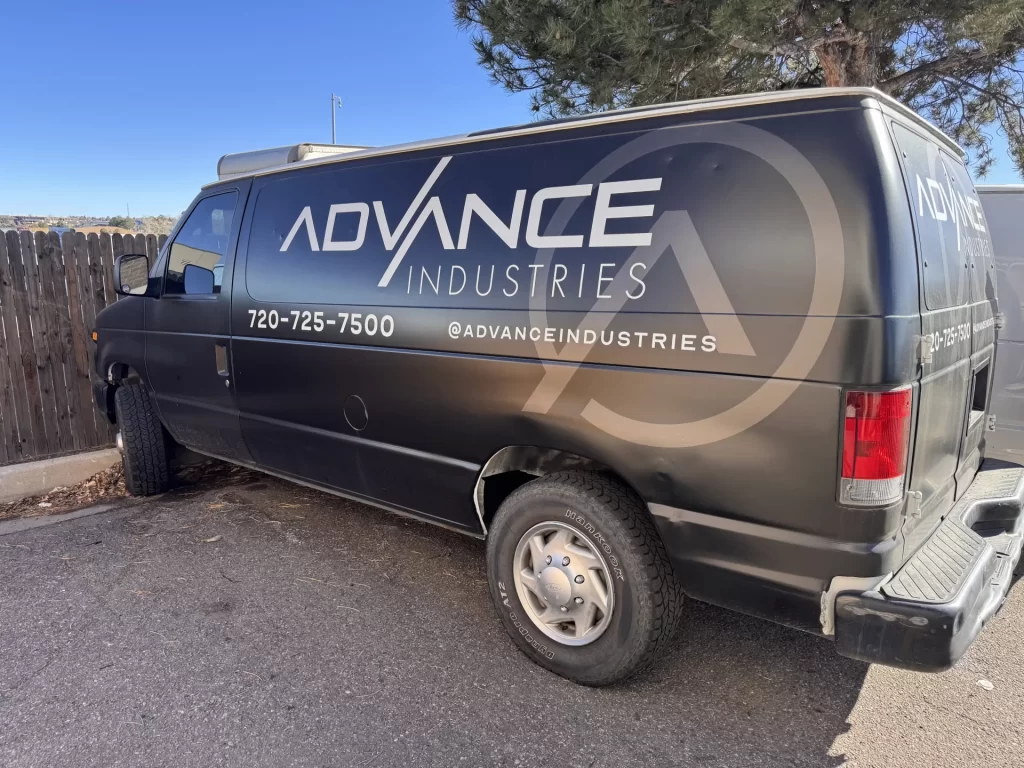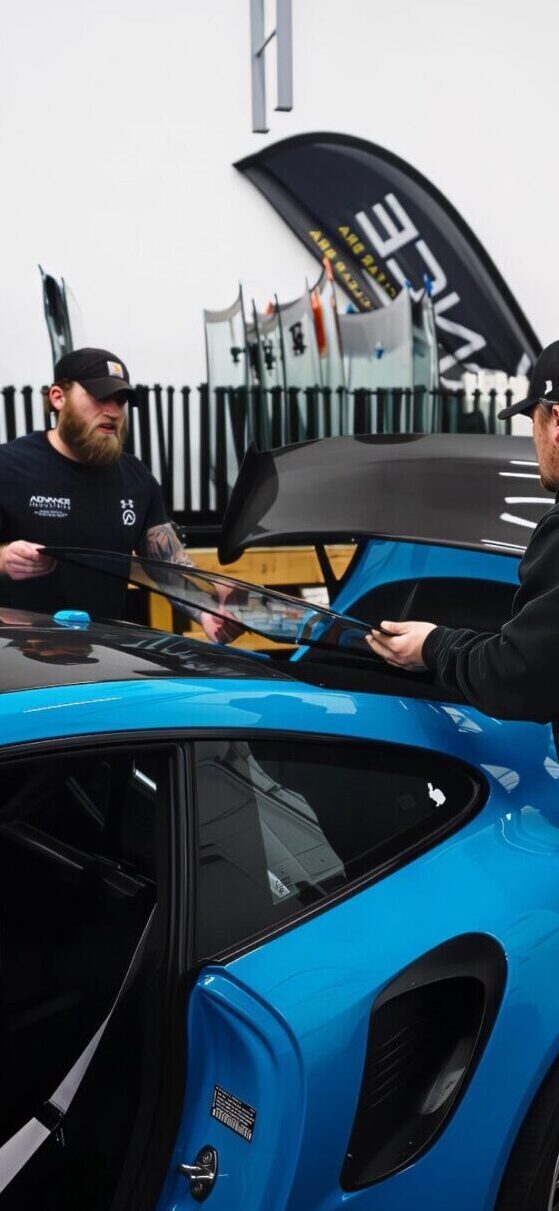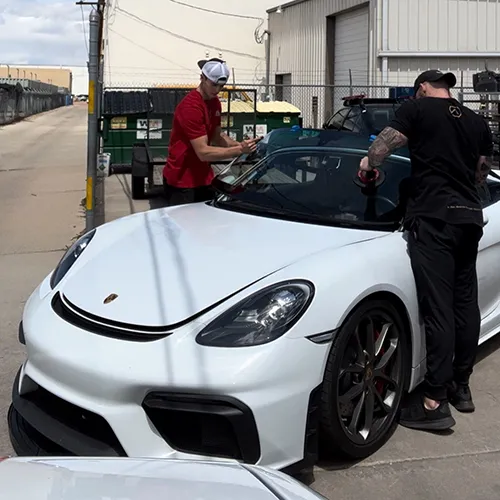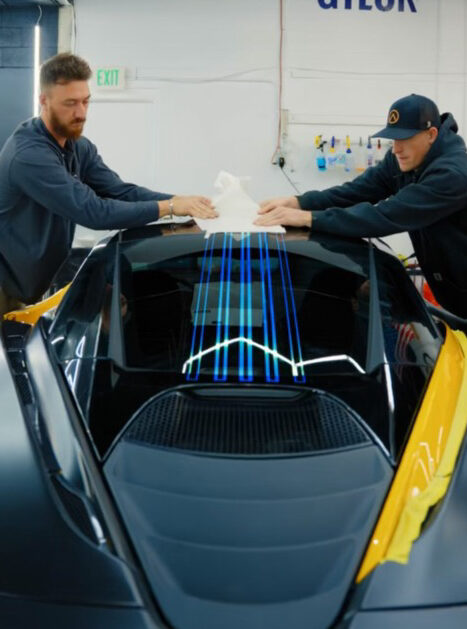Cold weather can be tough on auto glass. Many vehicle owners notice cracks spreading as temperatures drop. Explore with Advance Industries on how cold weather impacts auto glass, identify common types of cracks, and provide preventative measures to protect against damage. Learn why expert repair techniques for cold weather are essential and discover signs that indicate when it’s time for an auto glass replacement. By understanding these factors, owners can effectively manage auto glass issues, ultimately ensuring their vehicle remains safe and secure. For a free quote on any necessary replacements, be sure to reach out to Advance Industries to schedule your repair or replacement.

Understand How Cold Weather Affects Auto Glass Cracks
Cold weather can significantly impact auto glass, leading to cracks that may worsen over time. Understanding the science behind glass fragmentation in frigid conditions is essential, along with recognizing temperature thresholds that affect windshield integrity. Various stressors can contribute to crack development during colder months, which can also influence calibration and payment considerations related to repairs and deductibles. Each of these elements sheds light on ensuring vehicle safety and protecting investments in auto glass.
Examine the Science Behind Glass Fragmentation in Cold
Cold temperatures affect auto glass in ways that can lead to cracks and damage. Laminated glass, common in windshields, is designed to absorb impact and maintain integrity. However, when exposed to extreme cold, the materials can contract, creating stress points that may eventually lead to fragmentation.
Technicians understand that cold weather can exacerbate existing weaknesses in glass. When the temperature drops, any small chips or cracks previously unnoticed can expand, which puts drivers at risk. Customers often overlook these just minor flaws, but they need to be aware that cold weather can make these issues more serious, emphasizing the importance of regular inspections.
Insurance implications come into play as well during colder months. Many policies cover windshield repairs, but failing to address cracks caused by changing temperatures may lead to higher deductibles later on. By consulting with a qualified technician and getting ahead of potential damage, customers can avoid deeper financial burdens while ensuring their vehicle’s safety.
Identify Temperature Thresholds That Impact Glass Integrity
Temperature has a significant impact on vehicle glass, with specific thresholds determining the integrity of windows. When temperatures drop below freezing, glass materials can start to contract, increasing the risk of cracks developing. It’s essential for vehicle owners to stay aware of these critical temperatures to prevent small imperfections from escalating into serious issues.
For those using their trucks or other vehicles frequently in colder weather, regular inspections become vital. In cases where temperature fluctuations are common, the stress on the glass can be more pronounced, leading to greater chances of breakage over time. Automotive solutions like preventative maintenance can help ensure windows remain intact despite harsh conditions.
Mobile service options are available for those needing quick repairs. Advance Industries offers this as a free service for any windshield replacement. Addressing glass issues promptly can help alleviate bigger problems down the road. Drivers should not delay in seeking professional assistance, especially when temperatures dip and the risk of damage rises:
| Temperature Range | Possible Impact on Glass |
|---|---|
| Above 32°F (0°C) | Normal expansion; low risk of cracks |
| 32°F to 0°F (0°C to -18°C) | Increased stress; existing chips may expand |
| Below 0°F (-18°C) | High risk of vibration-related cracks |
Explore How Stressors Lead to Crack Development in Cold
Many factors contribute to the development of cracks in auto glass during cold weather. Debris like dirt or small stones can hit the windshield and create minor chips, which might go unnoticed at first. When temperatures drop, these chips can expand, leading to larger cracks that compromise the glass’s integrity.
Cold temperatures often increase stress on already weakened glass. For instance, if a vehicle is parked overnight in frigid weather and then suddenly exposed to heat from the sun, this rapid temperature change can cause existing imperfections to worsen. Seeking timely auto glass services can help identify and repair these issues before they escalate, keeping the vehicle safe and functional.
Another stressor to consider is the repeated freezing and thawing cycle that occurs during winter. This cycle can create pressure on the windshield, especially if ice forms in the cracks. Regular inspections by professionals familiar with these seasonal challenges can help drivers stay ahead of potential problems, ensuring their auto glass remains in good shape throughout the colder months.
Recognize Common Types of Cracks in Cold Conditions

Understanding various crack types like star, dandy, and long cracks helps vehicle owners identify issues caused by cold weather. As temperatures drop, these cracks can expand, especially if there’s preexisting damage. Recognizing the behavior of different cracks in frigid conditions provides valuable insights into the importance of timely auto glass repair and maintenance.
Differentiate Between Star, Dandy, and Long Cracks
Star cracks are a common type that often appears in auto glass during cold weather. These cracks typically start from a point of impact, like a small chip, and create a star-like pattern with multiple lines radiating outward. In cold temperatures, these cracks can expand quickly due to the stresses introduced by temperature fluctuations, making timely repairs crucial to prevent further damage.
Dandy cracks are slightly different as they resemble a small single crack with a defined start point but can branch out like a tree. These cracks can initially seem minor, but when winter hits, they tend to widen under pressure from cold air and heating cycles. Vehicle owners should pay attention to these issues and seek evaluations to avoid potential safety hazards down the road.
Long cracks, on the other hand, extend several inches across the glass and are usually more serious than their shorter counterparts. These cracks can stem from temperature changes or impact-related stress, and when they form in cold weather, they risk spreading beyond repair. Owners noticing long cracks should act quickly, as they’re more likely to compromise the structural integrity of the windshield, posing visibility and safety concerns while driving.
Analyze How Cracks Expand Under Low Temperatures
When temperatures drop, cracks in auto glass can become more problematic. The cold air causes the glass to contract, which puts pressure on any existing imperfections. As these cracks shrink and expand with temperature changes, they can quickly worsen, turning minor chips into larger fractures that compromise visibility and safety.
For instance, if a vehicle sits overnight in freezing temperatures and is then exposed to the sun’s warmth, the rapid temperature shift can make cracks spread faster. This phenomenon highlights why vehicle owners should regularly inspect their windshields for any signs of damage, especially in the colder months. Catching cracks early can save time and money on repairs.
Moreover, the frequent cycle of freezing and thawing can affect the longevity of auto glass. Ice forming in the cracks creates additional pressure, forcing them to widen. By proactively seeking expert assessments during cold weather, vehicle owners can keep their glass in optimal condition and avoid more significant issues down the road.
Assess the Impact of Preexisting Damage on Crack Behavior
Preexisting damage on auto glass can heavily influence how cracks behave in cold weather. Small chips or scratches, while seemingly minor, can act as stress points that worsen when temperatures dip. When winter sets in and conditions fluctuate, these preexisting flaws are more likely to expand, leading to significant damage that can compromise both visibility and safety.
Drivers may not realize that even the smallest imperfections can escalate quickly when exposed to cold. For example, a small chip may withstand mild weather but can turn into a long crack after a few nights of freezing temperatures. This emphasizes the importance of regular glass inspections, especially for vehicles that face harsh winter conditions.
Taking the time to repair minor chips before they turn into major cracks is a proactive measure for vehicle owners. Addressing these small issues early can save money and time down the road. Drivers should consult with auto glass experts to assess existing damage and recommend appropriate solutions during the cold months:
| Type of Damage | Impact in Cold Weather |
|---|---|
| Small Chips | Can expand into larger cracks under stress |
| Scratches | May weaken glass, increasing risk of breakage |
| Long Cracks | Worsen rapidly, threatening overall safety |
Learn Preventative Measures for Auto Glass Damage

Implementing routine inspections for seasonal changes is vital for maintaining auto glass integrity. Using protective coatings can minimize risks of cracks, while parking strategically can shield the glass from harsh weather conditions. Each of these tactics plays an important role in preventing damage and ensuring durability, providing vehicle owners with practical steps to protect their investments.
Implement Routine Inspections for Seasonal Changes
Regular inspections are a key strategy for maintaining auto glass in cold temperatures. Vehicle owners should take the time to examine their windshields and windows at the start of each season. Catching minor chips or cracks early can prevent bigger issues from developing as temperatures fluctuate.
During these inspections, it’s beneficial to pay attention to the glass’s condition after extreme weather changes. For instance, if a vehicle has been parked outside in freezing conditions, looking closely for any signs of damage can lead to timely repairs. Addressing small imperfections promptly not only enhances safety but can also save on repair costs in the long run.
Vehicle owners might also consider scheduling professional inspections as part of their routine maintenance. Experts can provide a thorough assessment of the glass, identifying potential problems that may not be visible to the untrained eye. This proactive approach ensures that the auto glass remains in good shape, especially when facing cold weather challenges.
Utilize Protective Coatings to Minimize Damage Risks

Protective coatings can play a significant role in minimizing auto glass damage during cold temperatures. These coatings act as a barrier against harsh weather conditions, preventing small chips and cracks from forming or worsening. By applying a high-quality coating, vehicle owners can help maintain the integrity of their windshields and windows, reducing repair costs over time.
In practice, using ceramic coatings or specialized sealants provides an additional layer of defense. These products repel water, dirt, and ice, which not only enhances visibility but also lowers the chances of debris causing damage. Many professional auto glass services, like Advance Industries, recommend these coatings as part of regular vehicle maintenance to protect against the effects of winter weather.
Regular application of protective coatings ensures that drivers remain proactive about their auto glass care. This simple step can help mitigate risks associated with temperature fluctuations and keep windshields free from the expansion and contraction stresses that lead to cracks. By prioritizing this preventative measure, vehicle owners can enjoy safer driving experiences year-round:
| Type of Protective Coating | Benefits |
|---|---|
| Ceramic Coatings | Repels water and debris; enhances durability |
| Sealants | Protects against ice formation; prevents scratches |
| Professional Applications | Ensures proper coverage and effectiveness |
Park Strategically to Shield Glass From Harsh Weather
Parking a vehicle strategically can significantly reduce the risk of auto glass damage during cold weather. For instance, choosing a garage or carport protects windshields from extreme temperature fluctuations that can lead to cracks. If covered parking isn’t available, drivers should at least aim for a spot with ample natural shelter, such as trees or tall buildings, to shield the glass from harsh winds and precipitation.
Taking care to park away from other vehicles can also decrease the likelihood of debris. When vehicles are close together, flying gravel or ice can easily strike the glass, causing chips that may expand in colder temperatures. A little distance can go a long way in maintaining the integrity of the glass and preventing costly repairs down the line.
Moreover, using sunshades or window covers on particularly cold nights can help maintain a more consistent temperature inside the car. This practice mitigates the risk of the glass experiencing rapid temperature changes when transitioning from a freezing exterior to a warmer interior. Simple preventive measures like these can significantly contribute to the longevity and safety of auto glass:
| Preventative Action | Benefits |
|---|---|
| Strategic Parking | Shields glass from extreme temperatures |
| Distance from Other Vehicles | Reduces risk of debris strikes |
| Use of Sunshades | Helps regulate temperature for glass |
Discover Repair Techniques for Cold Weather Cracks

Cold weather can complicate auto glass repairs, making it essential to consider effective methods. While auto owners might be tempted to seek out cheaper repair options, or even DIY kits, its critical to turn to professionals when it comes to windshields and other auto glass needs. That’s why the Advance Industries shop in Highlands Ranch is the place to turn to this winter for clearing your view and getting back on the road safely.
Understand Professional Repair Methods and Their Benefits
Professional repair methods for cold weather cracks often involve the use of specialized resins and tools designed to work effectively in lower temperatures. Technicians are trained to assess the damage and choose the best approach based on the type of crack and its severity. By using high-quality materials, they can enhance the durability of the repair, which is essential since cold temperatures can make minor issues worse over time.
Another advantage of professional repair is the expertise that technicians bring to the table. They can not only fix the visible damage but also identify potential underlying issues that may not be immediately apparent. This thorough evaluation helps prevent future problems, saving vehicle owners from costly repairs later on, especially during the harsher winter months.
Moreover, seeking professional help for auto glass repairs ensures safety and compliance with industry standards. Well-trained professionals follow regulations and best practices, ensuring that the repair is not only effective but also safe for driving. With automotive glass being crucial for visibility, professional repair methods provide peace of mind that maintains the integrity of the vehicle during cold weather conditions.
Analyze Cost Considerations for Quick Glass Repairs
When vehicle owners face auto glass cracks in cold temperatures, cost considerations become a critical factor in deciding whether to repair or replace the glass. Quick repairs can often save money in the long run, especially if the minor chips aren’t addressed promptly. Ignoring these small issues during winter can lead to larger cracks that require more expensive repairs or even a full windshield replacement.
Many insurance policies cover windshield repairs without raising premiums, making it financially sensible for drivers to act quickly. Seeking prompt auto glass repair can prevent escalating costs associated with more severe damage. Vehicle owners should always consult their insurance provider to understand coverage options and potential out-of-pocket costs for quick repairs.
Technicians familiar with cold weather conditions often recognize how to make efficient repairs, reducing downtime and keeping costs manageable. By opting for qualified services early on, like Advance Industries in Highlands Ranch, vehicle owners can ensure their auto glass remains intact and their vehicles safe, making a wise investment in both maintenance and peace of mind.
Investigate Signs You Need to Replace Your Auto Glass
It’s essential to evaluate when a crack is beyond repair feasibility, as some damage may require full replacement. Vehicle owners should look for warning signs of structural weakness in the glass, indicating that deeper issues could exist. Considering insurance and warranty options can provide valuable insight into the costs and benefits of replacing auto glass, ensuring both safety and peace of mind.
Evaluate When a Crack Is Beyond Repair Feasibility
When assessing auto glass damage, vehicle owners should look for signs that indicate a crack is beyond repair. If a crack extends across the driver’s line of sight or is longer than six inches, it usually requires replacement. This can ensure proper visibility and safety while driving, especially in cold conditions where minor cracks may worsen quickly.
Another key factor to evaluate is the location of the damage. Cracks near the edges of the windshield or those that intersect with other cracks can compromise the strength of the glass. When these issues arise, it’s clear that a replacement might be a better option to maintain the vehicle’s integrity.
Lastly, if the crack continues to spread despite earlier repairs or shows signs of deep internal damage, it’s time for replacement. Vehicle owners should consult with a professional to evaluate the situation accurately. Understanding these criteria helps drivers make informed decisions about their auto glass and avoid potential safety risks:
| Condition | Action Required |
|---|---|
| Crack across driver’s line of sight | Replacement needed |
| Length over six inches | Replacement suggested |
| Damage close to edges | Replacement recommended |
| Spreading crack after repair | Replacement necessary |
Identify Warning Signs of Structural Weakness in Glass
Vehicle owners should remain vigilant for signs indicating structural weakness in auto glass, especially as temperatures drop. One alarming indicator is a crack that spans several inches or crosses the driver’s line of sight. Such damage greatly reduces visibility and often necessitates immediate replacement to ensure safety while driving.
Another sign to watch for is damage located near the edges of the windshield. Cracks in this area can compromise the overall strength of the glass, making it more prone to breaking under stress. When this type of damage occurs, replacing the glass is often recommended to preserve the vehicle’s integrity.
If cracks continue to spread after an initial repair, it signals deeper underlying issues. This spreading can pose significant safety risks, indicating that the glass’s structural integrity has been compromised. Vehicle owners should consult professionals to evaluate these critical concerns and determine whether replacement is necessary:
| Condition | Action Required |
|---|---|
| Crack across driver’s line of sight | Replacement needed |
| Length over six inches | Replacement suggested |
| Damage close to edges | Replacement recommended |
| Spreading crack after repair | Replacement necessary |
Consider Insurance and Warranty Options for Replacement
When considering auto glass replacement, vehicle owners should pay attention to their insurance coverage. Many policies cover repairs without raising premiums, making it a smart choice to get these cracks fixed quickly. This proactive approach helps avoid higher costs later, as ignoring minor damage can lead to more extensive repairs.
Warranties also play a significant role in navigating replacement options. Some auto glass services offer warranties on their repairs, which can provide peace of mind. If a repaired crack spreads or worsens, a warranty may cover the costs of a replacement, protecting the owner’s investment in their vehicle’s safety.
It’s crucial for vehicle owners to understand their policy details and warranty offerings. Consulting with an insurance agent or an auto glass professional can clarify what coverage is available. This insight enables informed decisions when addressing auto glass issues, helping ensure the vehicle remains safe and compliant with road regulations.
Master Safety Tips for Driving With Cracked Auto Glass

Keeping a safe distance from other vehicles helps prevent additional damage to auto glass cracks. It’s also important to drive carefully on bumpy roads to minimize impacts that could worsen existing cracks. Vehicle owners should know when it’s time to seek immediate replacement for safety, ensuring their driving experience remains secure and their visibility is not compromised.
Keep Distance From Other Vehicles to Avoid Further Damage
Keeping a safe distance from other vehicles is key when driving with cracked auto glass, especially in cold temperatures. This extra space helps prevent additional damage from flying debris or sudden stops, which can worsen existing cracks. Vehicle owners should remember that the less stress on the glass, the better the chances of maintaining its integrity.
When drivers are too close to other vehicles, the risk of being hit by loose gravel or other objects increases. These small impacts may seem minor, but they can exacerbate cracks, leading to more extensive repairs or potential replacements. Staying back not only protects the windshield but also enhances overall safety by providing ample reaction time in case of sudden changes on the road.
Maintaining distance can also help reduce the likelihood of sudden stops or unexpected lane changes that might jolt the vehicle. Drivers can navigate rough terrains or icy roads more safely, knowing that they aren’t putting unnecessary pressure on their auto glass. Following these simple tips can guide drivers toward safer driving experiences even in challenging winter conditions:
- Always check the distance to maintain a buffer.
- Be mindful of road conditions to avoid sudden stops.
- Regularly inspect the glass for further damage.
Drive Carefully on Bumpy Roads to Minimize Impact
Driving on bumpy roads can be particularly challenging when dealing with cracks in auto glass, especially in cold temperatures. Each jolt or bump can intensify the existing damage, leading to larger cracks that are harder and more expensive to repair. Vehicle owners should avoid rough terrains whenever possible to keep their windshields intact.
It’s important for drivers to maintain a slow and steady speed on uneven surfaces, reducing the impact that vibrations have on the glass. They should be mindful of potholes or dips in the road, steering clear of them whenever they have the chance. This simple approach not only protects the windshield but helps maintain overall vehicle safety during winter driving.
Taking extra precautions while navigating bumpy roads can go a long way in preventing further damage. Regular vehicle inspections and addressing small cracks immediately can make a significant difference. By prioritizing safety and being aware of road conditions, vehicle owners can better protect their auto glass from cold-weather stressors:
- Drive cautiously on uneven surfaces.
- Avoid sudden stops to reduce stress on the glass.
- Inspect the windshield regularly for any changes.
Know When to Seek Immediate Replacement for Safety
Vehicle owners should know when to seek immediate replacement for cracked auto glass. If a crack spans across the driver’s line of sight, it significantly impacts visibility, making it crucial to replace it right away. Timely action not only ensures safety but also meets legal requirements, especially during cold weather when cracks can worsen quickly.
Cracks longer than six inches or those located near the edges of the windshield often compromise the glass’s strength. This damage can escalate rapidly in colder temperatures, making it important for drivers to assess the situation quickly. Noticing the warning signs early can save vehicle owners from more extensive repairs and potential safety hazards down the line.
If cracks continue to spread after previous repairs, replacement becomes necessary. Such spreading indicates deeper issues that could threaten the vehicle’s structural integrity, especially in icy conditions. Vehicle owners should consult professionals for evaluation when they notice any persistent damage to ensure the safety of their driving experience:
- Replace cracks across the driver’s line of sight immediately.
- Act quickly on cracks longer than six inches.
- Seek replacement if cracks spread after repairs.
